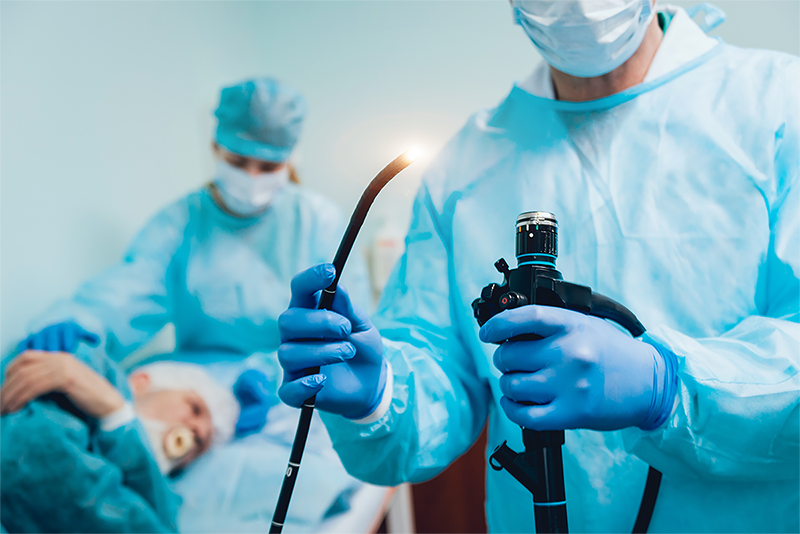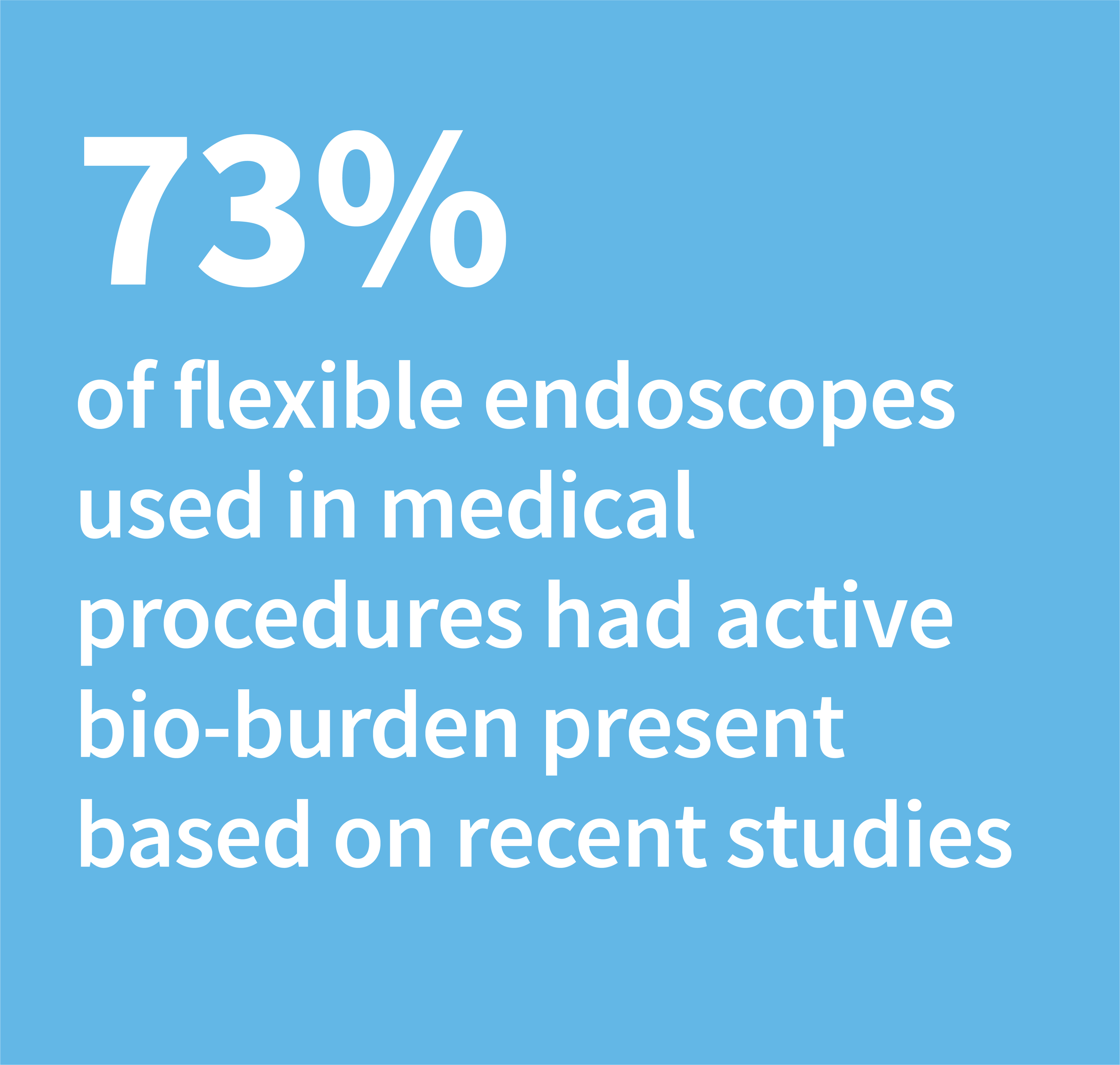
90% of all flexible endoscopes are not sterilized in hospitals before use.

Disinfection vs Sterilization
Disinfection and sterilization are both decontamination processes.
While disinfection reduces the level of microbial contamination, sterilization is the process of killing all pathogens, including bacterial spores, which are highly resistant.

60 million flexible endoscopes are used in procedures in the United States annually.
During disinfection, several bacterial spores and organisms may survive, posing potential infection risk. Disinfection does not ensure an “overkill’’ and therefore lacks the margin of safety achieved by sterilization procedures.
Moreover, after sterilization, the processed item is kept sterile either in a sealed container, pouch or bag, whereas after disinfection, the instruments are left exposed to room air and can be re-contaminated.
In particular, endoscopes are brushed and then soaked into a high level disinfectant solution which is not enough to reduce the bacterial load.
According to the Centers for Disease Control and Prevention (CDC), who published guidelines for reprocessing endoscopes in 2008, more healthcare-associated outbreaks have been linked to contaminated endoscopes than to any other medical device.

Current Standards for Endoscope Reprocessing
The Spaulding classification system is universally used to determine what type of disinfection or sterilization is appropriate for medical devices, and it is divided into three categories based on the risk of infection:
Critical: devices that break the mucosal barrier and should be sterilized
Semi-critical: devices that encounter mucous membranes or non-intact skin and should be sterilized or receive high-level disinfection
Non-critical: devices that encounter intact skin
Flexible endoscopes are considered semi-critical and used in sterile body cavities. Complex endoscope design features may allow organic debris to accumulate and they should be sterilized after each procedure, however, due to their material composition, they are heat labile and cannot be steam sterilized.
The margin of safety associated with cleaning and high-level disinfection of endoscopes is minimal making strict and meticulous adherence to reprocessing guidelines imperative in order to prevent cross-contamination between patients. Data have demonstrated that all the steps associated with manual endoscope reprocessing are rarely performed and some essential steps are commonly skipped. This low margin of safety associated with endoscope reprocessing compares with the high margin of safety associated with cleaning and sterilization of surgical instruments.
Transmission of Infection by Flexible Endoscope
Disinfected flexible endoscopes have been the cause of several Carbapenem Resistant Enterobacteriaceae (CRE) outbreaks at leading major US hospitals.
The most challenging instruments to process in low temperature sterilization are flexible endoscopes and devices with small narrow lumens.






